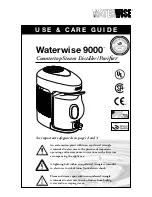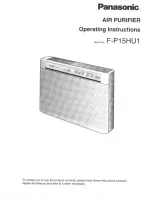
035-16408-001 Rev. B (101)
2
Unitary Products Group
GENERAL INFORMATION
These outdoor condensing units are designed to be installed
with corresponding variable speed air handlers or furnaces,
two stage furnaces and single speed air handlers or furnaces
and a corresponding coil with sweat connect lines. Each unit
is factory charged with refrigerant sufficient for the smallest
indoor evaporator coil plus 15 feet of field supplied vapor and
liquid lines. A balanced port hard shut-off TXV kit must be
used for optimum system performance.
Use this instruction in conjunction with the instruction for the
appropriate indoor evaporator coil, air handler or furnace and
other accessories. Read all instructions before installing the
unit.
INSPECTION
As soon as a unit is received, it should be inspected for possi-
ble damage during transit. If damage is evident, the extent of
the damage should be noted on the carrier's freight bill. A
separate request for inspection by the carrier's agent should
be made in writing. See Form 50.15-NM for more information.
REFERENCE
Installer should pay particular attention to the words NOTE,
CAUTION and WARNING.
NOTES are intended to clarify or make the installation easier.
CAUTIONS identify procedures which, if not followed care-
fully, could result in personal injury, property damage or
equipment damage.
WARNINGS are given to alert the installer that severe per-
sonal injury, death or equipment damage may result if instal-
lation procedures are not followed properly.
LIMITATIONS
The unit should be installed in accordance with all national
and local safety codes and the limitations listed below:
1.
Limitations for the indoor unit, coil and appropriate
accessories must also be observed.
2.
Optimal performance is gained by using a variable speed
air handler or furnace. Special care must be given when
matched with a single speed blower (furnace or air han-
dler) and a variable frequency drive control or a relay kit
to maintain the proper dehumidification.See section on
dehumidification for details.
3.
The outdoor unit must not be installed with any duct work
in the air stream. The outdoor fan is the propeller type
and is not designed to operate against any additional
external static pressure.
4.
The unit should not be operated at outdoor temperatures
below 60 °F.
The unit is not designed to operate with
a low ambient kit.
Do not modify the control system to
operate with any type of low ambient kit.
5.
Indoor evaporator coil orifice
must be removed prior to
the installation of a factory supplied balanced port TXV
kit.
Incorrect installation may create a condition
where the operation of the product could cause
personal injury or property damage.
This product must be installed in strict compli-
ance with the enclosed installation instructions
and any applicable local, state, and national
codes including, but not limited to, building, elec-
trical, and mechanical codes.






























